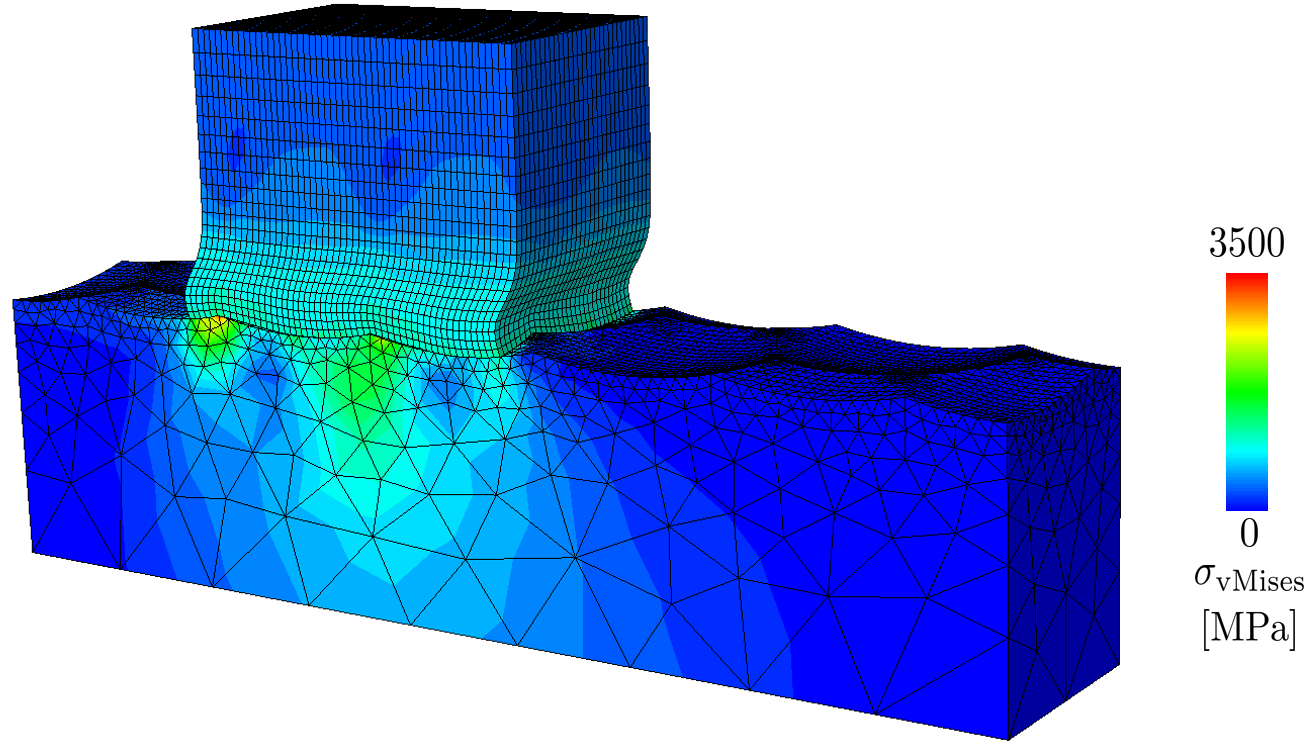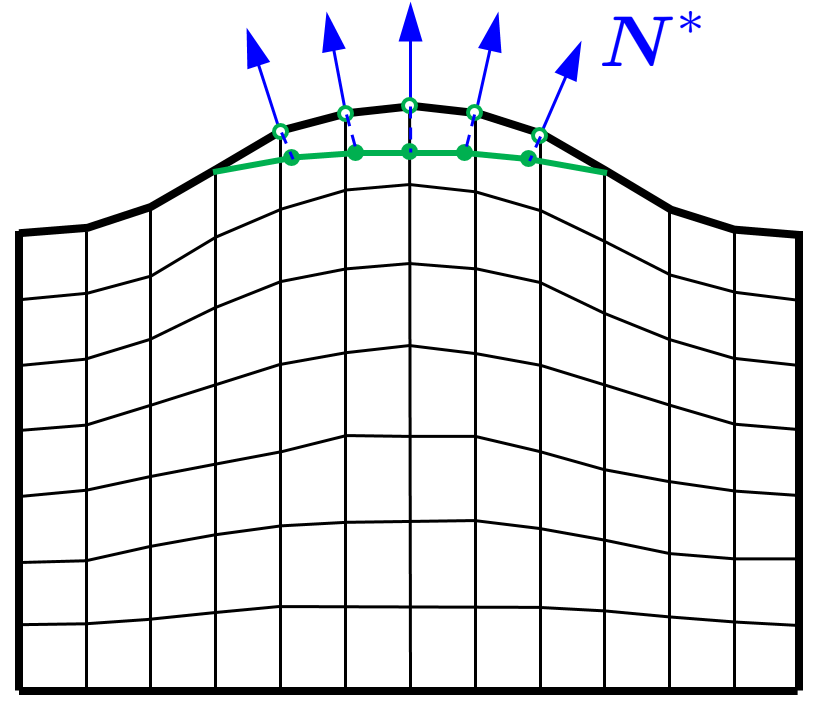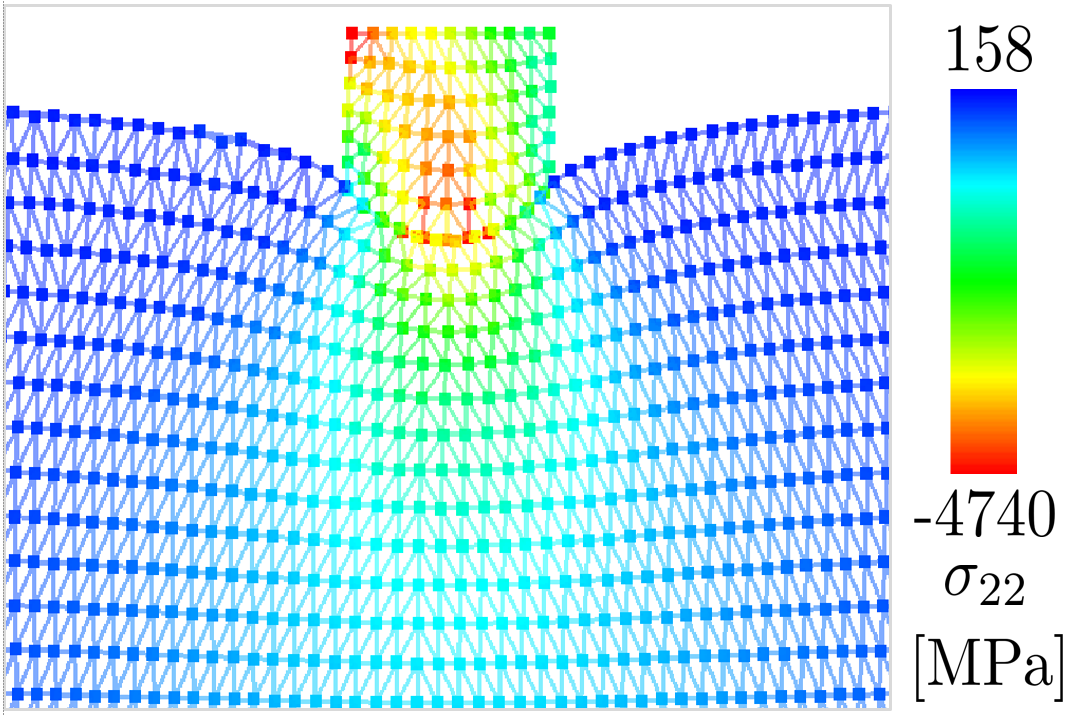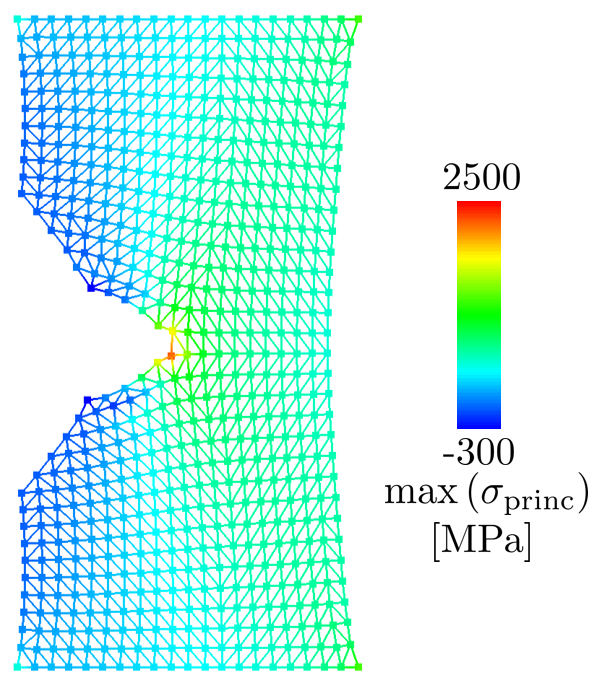C7 - Wear
Mechanism-based Modeling of Wear in Sheet-Bulk Metal Forming
Project Status: finished
Last Update: 09.10.2020
Members
- Prof. Dr.-Ing. Andreas Menzel (until 31.03.2021)
- M.Sc. Markus Schewe (until 31.03.2021)
Head of Project
Researcher
The aim of the project is a modelling of tool-surface wear in sheet-bulk metal forming operations. These tool surfaces are sometimes treated for an optimisation of the friction behaviour by microstructuring. Thus, the simulation of wear of these microstructures is a simulation problem on the mesoscale. The shape of the microstructuring is geometrically resolved in the model, whereas the surface roughness is represented by a suitable friction model.
Two modelling approaches are pursued in the project. The first approach consists of using the commercial finite element program Abaqus to simulate the contact and forming problem. The local surface tractions and relative velocities are then evaluated in a Python-based postprocessor and used to determine local wear volumes according to the Archard model. The wear volumes are applied by adapting the surface mesh and a new mesh is created. The simulation of a tool passover and the schematic representation of the surface adaptation are shown in the following figures.


The second approach provides mechanism-based wear modelling. The Particle Finite Element Method is suitable for simulating the removal of surface particles or micro chips. For this purpose, the tools and workpieces under consideration are seen as particle clouds of material points. A repeated re-meshing and shape detection of the body is performed. The finite element meshes are a means of calculating the continuum represented by the particle cloud. However, history variables as well as the deformation history are stored on the particles. The shape recognition allows new surfaces to be formed and chips or particles to be separated when high local deformations occur. Due to the fundamental changes to be incorporated in the finite element equations, a fully accessible implementation is necessary and the use of commercial finite element software is not practical. Thus, the adequate contact simulation moves into the focus of the modelling, as it is the basis for a robust and accurate simulation of the removal processes. Here the Particle Finite Element Method includes algorithms which are also suitable for the discretisation of the contact surfaces. The material removal itself depends on the parameters of the shape recognition algorithms, but also essentially on the local friction and material properties. Thus, the influence of the local mechanisms leading to material removal can be investigated on the presented simulation model. The following figure shows the contact simulation of a tool-body drawn over a soft block, as well as a notched tensile specimen, where the material separation is initiated by the shape recognition algorithm.


Figure taken from Schewe, Menzel, 2019, DOI: 10.1002/pamm.201900403, CC-BY 4.0.
Working Groups
Publications
2021
- Schewe, M.; Wilbuer, H.; Menzel, A.: Simulation of wear and effective friction properties of microstructured surfaces . In: Wear, 464(2021), elsevier, pp. 203491
2019
- Behrens, B.; Biermann, D.; Tillmann, W.; Krimm, R.; Meijer, A.; Schewe, M.; Stangier, D.; Commichau, O.; Müller, P.; Rosenbusch, D.; Menzel, A.: Untersuchungen strukturierter Werkzeugflächen und der Einfluss auf den Werkzeugverschleiß. In: 4. Industriekolloquium Blechmassivumformung 2019 – DFG Transregio 73, (2019), pp. 7-30
- Schewe, M.; Menzel, A.: Aspects of the Particle Finite Element Method applied to contact problems. In: Proc. Appl. Math. Mech., 19(2019)1, Weinheim: Wiley-VCH Verlag GmbH & Co. KGaA, pp. e201900403
2018
- Schewe, M.; Menzel, A.: The Particle Finite Element Method for the modelling and simulation of solid body interactions. In: Proc. Appl. Math. Mech., 18(2018)1, Weinheim: Wiley-VCH Verlag GmbH & Co. KGaA, pp. e201800110
2017
- Berthelsen, R.; Wilbuer, H.; Menzel, A.: Computational modelling of wear and the effective frictional behaviour of elastoplastic tools. In: Proceedings of the 7th GACM Colloquium on Computational Mechanics, 7(2017), Institute for Structural Mechanics, University of Stuttgart, http://dx.doi.org/10.18419/opus-9334, pp. 786-789
2016
- Berthelsen, R.; Wilbuer, H.; Holtermann, R.; Menzel, A.: Computational modelling of wear – application to structured surfaces of elastoplastic tools. In: GAMM-Mitt., 39(2016)2, Weinheim: Wiley-VCH Verlag GmbH & Co. KGaA, pp. 210-228
Presentations
2019
- 20.02.2019: Schewe, M.; Menzel, A.: Aspekte der Partikel Finite Elemente Methode angewendet auf Kontaktprobleme, 90th GAMM Annual Meething, Wien
2018
- 21.03.2018: Schewe, M.; Menzel, A.: Die Partikel-Finite-Elemente-Methode für die Modellierung und Simulation von Festkörper Interaktionen, 89th GAMM Annual Meething, München
2016
- 26.10.2016: Menzel, A.: Anwendung eines numerischen Verschleiß Modells auf strukturierte Oberflächen, 29th Nordic Seminar on Computational Mechanics, Chalmers University of Technology, Göteborg






